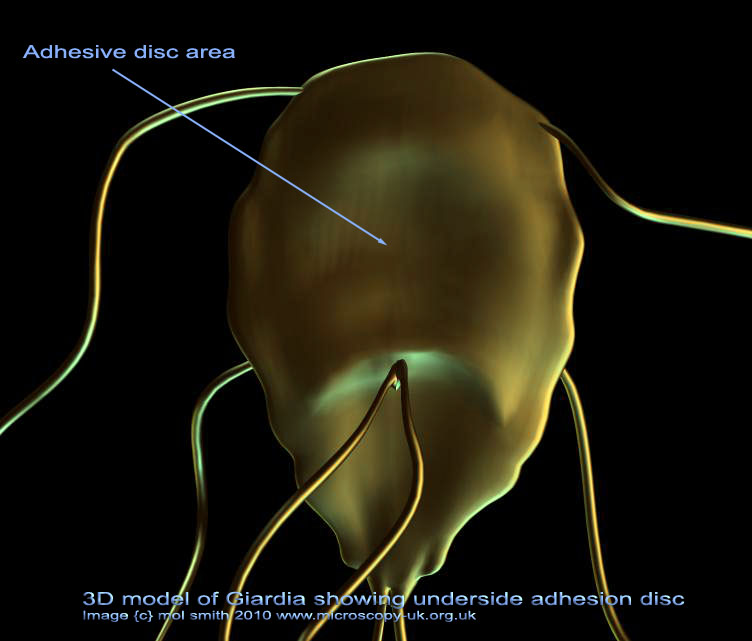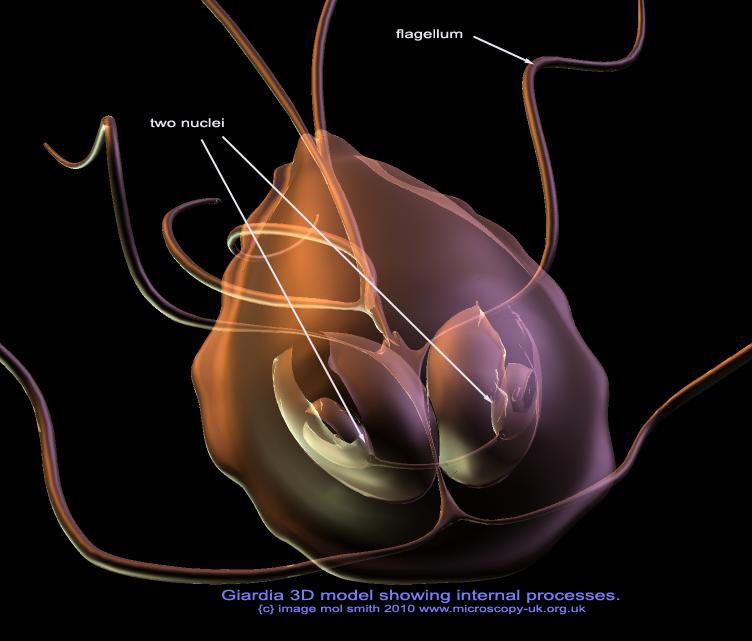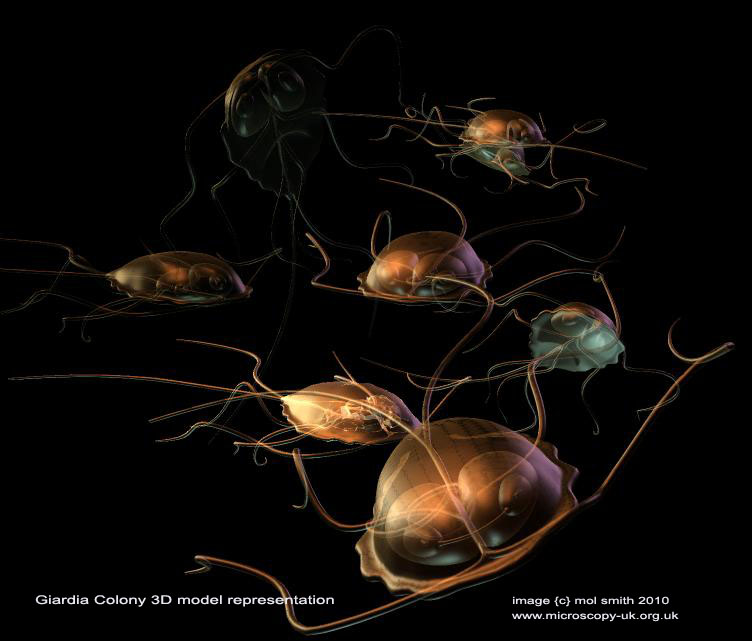|
3D Modelling of Giardia
The 3D model below has been rendered
as semi-transparent so we can detect internal processes as well as see external ones. It is a bit metallic looking
here but it can be 'retextured' to look less hard-surfaced. The underside of the protozoa has a characteristic
'smiley face' look about it. The flagella used for motility are well defined as as well as the distinctive curly-edged
skirt around the main capsule.
The main sucking disc, used to adhere to the intestinal wall (which incidentally leaves behind an impressed circle
on the surface after detachment) is not so clear. So lets render the model again to see that detail.

Here (above), the adhesive area is pushed in during the model rendering to form a sucker like depression. It is
important to realize this is an artist's impression (mine) of the actual external process of this area of the entity.The
model contains internal processes too and we can render the model to make it more transparent and take a look inside
at these elements here.

The two nuclei are similar in appearance, DNA content, transcription, and moment of replication. Giardia and the
other diplomonads are unique in this. The active feeding stage of a protozoal parasite, as distinct from its encysted
stage, is called itsTrophozoite phase. The Trophozoites of Giardia have a ploidy (ploidy is the number of complete sets of chromosomes in a biological cell.) of four, and the ploidy of its cyst stage is eight, which
then poses the question of how Giardia maintains homogeneity between the chromosomes of the same and opposite nuclei.

Although infection with this protozoan can be uncomfortable and distressing, especially when it builds up a significantly
sized colony, it is rarely fatal. As an interesting anecdote, it has recently been discovered that Giardia was
a likely contender for causing dysentery to Crusaders in Palestine in the 12th and 13th centuries.
Please see the resources
page for copyright and licensing
information.
|


